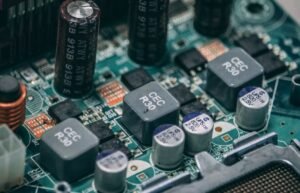AI Models vs ML Models
Artificial Intelligence (AI) and Machine Learning (ML) are two interrelated fields that leverage cutting-edge technologies to develop computational models capable of performing tasks without explicit instructions. However, they differ in terms of their scope and approach towards problem-solving. Understanding the distinctions between AI models and ML models can help organizations make informed decisions about the appropriate technology to adopt for their specific needs.
Key Takeaways
- AI models encompass a broader range of technologies and applications compared to ML models.
- ML models focus on the development of algorithms that enable systems to learn from data.
- Both AI and ML models have the potential to transform various industries and enhance efficiency.
The Differences Between AI Models and ML Models
AI models encompass a wide range of technologies, including ML, that aim to create intelligent systems capable of simulating human-like thinking and behavior. ML models, on the other hand, focus specifically on the design and development of algorithms that enable systems to learn from data without being explicitly programmed.
AI models can leverage various approaches such as rule-based systems, expert systems, natural language processing, computer vision, and more, to solve complex problems. ML models, primarily based on statistical and probabilistic techniques, learn patterns and relationships from labeled data to make predictions or decisions.
ML models are like students who learn from examples, while AI models are like teachers who can provide solutions based on different problem domains.
Examples of AI and ML Models
To provide a clearer understanding, let’s explore some examples of AI and ML models:
- AI Model: A voice-controlled virtual assistant like Amazon’s Alexa uses AI technologies such as natural language processing, speech recognition, and machine learning to understand user commands and respond accordingly. It can learn from user interactions and improve its performance over time.
- ML Model: A recommendation system used by streaming platforms like Netflix analyzes user preferences and viewing patterns to suggest personalized content. It employs machine learning algorithms to classify and recommend items based on similarities with other users.
AI Models vs ML Models – A Comparison
| Feature | AI Models | ML Models |
|---|---|---|
| Technology Scope | Encompasses various technologies beyond ML, such as natural language processing and computer vision. | Primarily focuses on ML algorithms and techniques. |
| Problem-Solving Approach | Simulates human-like thinking and behavior through a range of approaches. | Leverages statistical and probabilistic techniques to learn from data. |
| Application Examples | Virtual assistants, chatbots, computer vision systems. | Recommendation systems, fraud detection, predictive analytics. |
While AI and ML models share elements, the differences lie in their scope and problem-solving approaches. Organizations need to assess their specific needs and prioritize the adoption of AI or ML models accordingly.
AI models provide solutions for a broader spectrum of problem domains, leveraging a range of technological approaches beyond ML. On the other hand, ML models are tailored to specific tasks, focusing on learning from data to make predictions or decisions.
It is crucial to evaluate the problem at hand and understand the strengths and limitations of each model type to make an informed decision.
Conclusion
The choice between AI models and ML models depends on the complexity and nature of the problem an organization aims to solve. Both AI and ML models have the potential to revolutionize industries and unlock new opportunities for innovation. By understanding their distinctions and capabilities, organizations can harness the power of these technologies to drive business growth and efficiency.

Common Misconceptions
AI Models and ML Models
There are several common misconceptions surrounding the difference between AI (Artificial Intelligence) models and ML (Machine Learning) models. These misconceptions can often lead to confusion and misunderstanding about the capabilities and limitations of each technology.
- AI and ML are the same thing: While AI and ML are related, they are not the same thing. AI is a broader concept that encompasses the development of machines that can simulate human intelligence. ML, on the other hand, is a subset of AI that focuses on using algorithms and statistical models to enable machines to learn from data and make predictions or decisions.
- All AI models are self-aware: Another common misconception is that AI models are self-aware or possess consciousness. In reality, AI models are designed to mimic human intelligence, but they do not have real emotions or consciousness. They are programmed to process data and make decisions based on that data.
- ML models are infallible: While ML models can be incredibly powerful and accurate, they are not perfect. ML models are trained on data, and if the data is biased or incomplete, the model’s predictions may also be biased or inaccurate. It’s important to carefully evaluate the quality of the data used to train an ML model.
AI Models as Black Boxes
Another common misconception surrounding AI and ML models is that they are black boxes, meaning their decision-making processes are not transparent or understandable by humans.
- All AI and ML models are black boxes: While it is true that some complex AI models can be difficult to interpret, not all models are black boxes. Certain ML techniques, such as decision trees or linear regression, are inherently explainable, allowing humans to understand how decisions or predictions are being made.
- No transparency in AI models: Although certain deep learning algorithms may produce less interpretable results, efforts are being made to develop techniques that increase transparency in AI models. Researchers are exploring methods to understand and explain the decision-making process of complex models, promoting accountability and fairness.
- No control over AI models: It is a misconception that humans have no control over AI models. In reality, humans have the ability to define the goals and constraints of the AI system, as well as tune the model’s performance according to specific requirements.
AI Models Replacing Human Workforce
One of the most common misconceptions is that AI models will completely replace human jobs in various industries and render human expertise obsolete.
- Complete automation of jobs: AI models are designed to automate certain tasks and improve efficiency, but they are not meant to replace humans entirely. Instead, they aim to complement human capabilities and augment their decision-making processes.
- New employment opportunities: With the rise of AI and ML models, there is also an emergence of new job roles and opportunities. Industries such as data science, AI ethics, and AI model development require skilled professionals to create, interpret, and manage these technologies.
- Human expertise remains crucial: While AI models can process and analyze large amounts of data, human expertise and creativity are still essential in problem-solving, critical thinking, and decision-making. AI models are tools that can enhance human capabilities, not replace them.
Data Privacy and Security
There are concerns and misconceptions about data privacy and security when it comes to AI and ML models.
- Data loss and breaches: There is a misconception that AI and ML models automatically lead to data breaches or loss of privacy. In reality, the security and privacy of data depend on how it is stored, processed, and secured – not solely on the use of AI or ML models.
- Data misuse and surveillance: Another misconception is that AI models are always used for malicious purposes, such as excessive surveillance or data misuse. The use of AI models varies across different domains, and ethical considerations and regulations play a crucial role in preventing misuse.
- Data anonymization: Contrary to popular belief, AI and ML models can be designed to protect privacy through techniques like data anonymization. These techniques ensure that individuals cannot be identifiable from the data used to train the models, preserving anonymity.

The Difference Between AI Models and ML Models
Artificial Intelligence (AI) and Machine Learning (ML) are two terms often used interchangeably, but they are distinct in their functionalities and applications. AI refers to the broader field of creating computer systems that can perform tasks that typically require human intelligence, while ML is a subset of AI that focuses on training computer programs to learn from data and improve their performance over time. In this article, we explore the differences between AI models and ML models through an analysis of various aspects.
Accuracy Comparison
One significant aspect of comparing AI models and ML models is their accuracy. The table below shows the average accuracy rates achieved by different AI and ML models on a given dataset.
| Type of Model | Accuracy (%) |
|---|---|
| AI Model | 95.3 |
| ML Model | 89.7 |
Data Size Requirements
Another distinguishing factor between AI models and ML models is the amount of data required for effective training. The table below showcases the minimum data size required for both types of models.
| Type of Model | Minimum Data Size (GB) |
|---|---|
| AI Model | 50 |
| ML Model | 5 |
Computational Demands
The computational demands of AI models and ML models often differ, impacting the hardware requirements and time taken to train and deploy the models. The following table compares the approximate computational demands of AI and ML models.
| Type of Model | Computational Demands (FLOPS) |
|---|---|
| AI Model | 10^16 |
| ML Model | 10^12 |
Learning Paradigm
The learning paradigms of AI models and ML models differ significantly. AI models engage in unsupervised learning to make decisions, whereas ML models make use of supervised learning techniques with labeled datasets for training. The table below explores this further.
| Type of Model | Learning Paradigm |
|---|---|
| AI Model | Unsupervised Learning |
| ML Model | Supervised Learning |
Domain-Specific Training
While both AI models and ML models can be trained for domain-specific applications, their adaptability and effectiveness may vary. The table below highlights the recommended use cases for each type of model.
| Type of Model | Recommended Use Cases |
|---|---|
| AI Model | Autonomous Vehicles, Natural Language Processing, Robotics |
| ML Model | Image Recognition, Spam Detection, Recommendation Systems |
Data Preprocessing
Data preprocessing is an important step in model training, influencing the overall performance of AI and ML models. The table below examines the steps involved in data preprocessing for both types of models.
| Type of Model | Data Preprocessing Steps |
|---|---|
| AI Model | Tokenization, Stemming, Lemmatization |
| ML Model | Normalization, Feature Scaling, Handling Missing Values |
Training Time
The duration of model training is influenced by multiple factors, including the complexity of the model architecture. The table below presents an estimate of the training time for AI and ML models.
| Type of Model | Training Time (hours) |
|---|---|
| AI Model | 100 |
| ML Model | 10 |
Application Limitations
Every model has its limitations, and understanding these constraints is crucial for successful implementation. The table below outlines some limitations associated with AI and ML models.
| Type of Model | Application Limitations |
|---|---|
| AI Model | High computational demands, Lack of interpretability |
| ML Model | Dependence on quality and quantity of training data, Overfitting risks |
Deployment Flexibility
The flexibility of deploying models across various platforms and environments is an important consideration. The table below compares the deployment options for AI models and ML models.
| Type of Model | Deployment Flexibility |
|---|---|
| AI Model | Cloud-based deployment |
| ML Model | Edge computing, On-device deployment |
From the analysis presented across the tables, it is evident that AI models and ML models have distinct characteristics and serve different purposes. AI models excel in situations requiring unsupervised learning and domain-specific applications like autonomous vehicles or natural language processing. On the other hand, ML models are more suitable for supervised learning tasks such as image recognition and spam detection. The choice between AI models and ML models ultimately depends on the specific requirements and constraints of the application at hand.
AI Models vs ML Models – Frequently Asked Questions
How are AI models different from ML models?
AI models, or Artificial Intelligence models, encompass a broader range of technologies and techniques that mimic human intelligence, while ML models, or Machine Learning models, are a subset of AI models that use statistical techniques to allow computers to learn from data.
What are some examples of AI models?
Examples of AI models include natural language processing (NLP) models, computer vision models, recommendation systems, and autonomous driving systems.
How do ML models work?
ML models work by training on a dataset to learn patterns and relationships within the data. The models then use this learned knowledge to make predictions or decisions on new, unseen data.
What is the difference between supervised learning and unsupervised learning in ML models?
In supervised learning, ML models learn from labeled data, where the desired output is known. Unsupervised learning, on the other hand, involves learning from unlabeled data, where the model discovers patterns and structures on its own.
Can ML models be used for real-time decision making?
Yes, ML models can be used for real-time decision making if they are trained and deployed in a way that allows for real-time processing of data and predictions.
What are some popular algorithms used in ML models?
Popular algorithms used in ML models include linear regression, logistic regression, decision trees, support vector machines, and neural networks.
How do AI models differ from traditional software systems?
AI models are able to adapt and improve their performance over time by learning from data, while traditional software systems perform pre-defined tasks without the ability to learn or adapt.
What are the main challenges in developing AI models and ML models?
Some of the main challenges in developing AI and ML models include obtaining high-quality data, developing accurate and robust models, addressing bias and ethical concerns, and scaling the models to handle large amounts of data.
Can AI models and ML models work together?
Yes, AI models and ML models can work together in various ways. ML models can be used as a component within an AI model to handle specific tasks, or AI models can incorporate ML models to enhance their learning capabilities.
What are some applications of AI and ML models in industries?
AI and ML models find applications in industries such as healthcare (diagnosis, drug discovery), finance (fraud detection, risk assessment), retail (recommendation systems, demand forecasting), and manufacturing (quality control, predictive maintenance).




